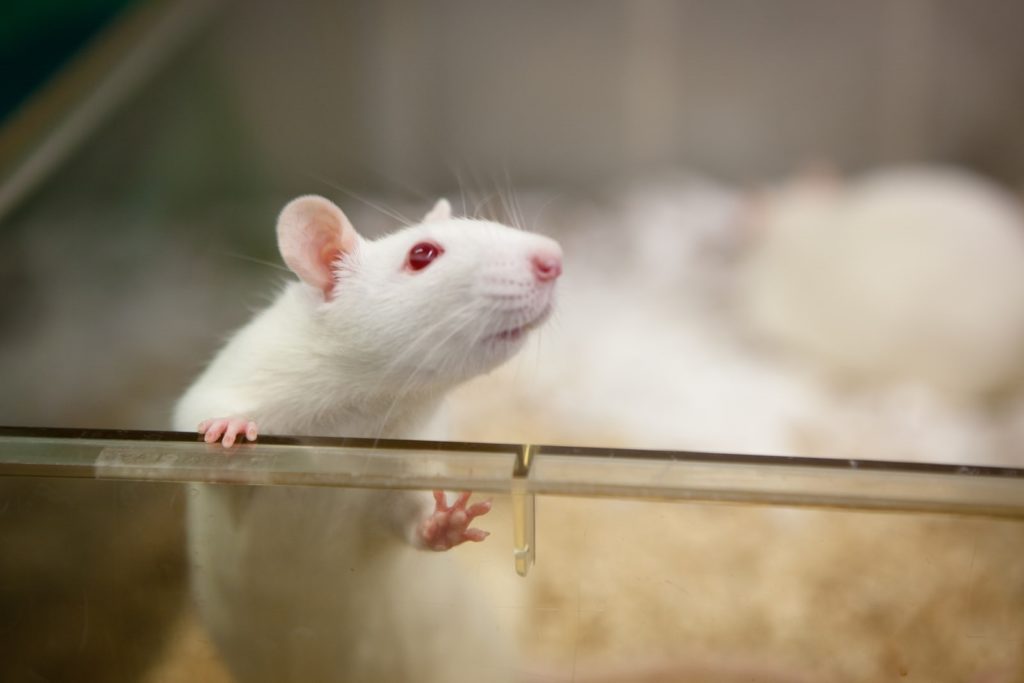The ultimate goal of the EU legislation, which is designed to protect the welfare of animals used for scientific purposes, is to fully replace animal testing with non-animal methods.
With these words, Directive 2010/63/EU firmly embeds the principle of the Three Rs (i.e. the Replacement, Reduction and Refinement in the use of animals) in EU legislation; while the provisions of the REACH Regulation provide a legal mandate for the EU institutions and Member States to promote alternative methods and enforce animal use as a last resort for the safety testing of hazardous chemicals.
Although the EU may still be far from realising the end goal of eliminating all animal use, scientists have taken important strides to develop innovative and cost-effective methods, which should obviate the ‘need’ to use sentient beings to test the safety of hazardous substances.
There have already been a lot of exciting developments elsewhere in the world. In the US, the Tox21 programme - a research collaboration between federal agencies - has developed non-animal methods, such as in vitro cell-based assays, to efficiently evaluate the safety of commercial chemicals, pesticides, food additives and medical products. While in Japan, the scientific authorities are looking into using AI for the field of chemical substance safety.
In the EU, we love to think of ourselves as great innovators and especially as a leading force for animal welfare. Regrettably, this is not always the case. Sometimes it seems like we are retrogressing, rather than progressing.
Recent remarks from Bjorn Hansen, Executive Director of the European Chemicals Agency (ECHA), provide a good case in point. He has publicly proclaimed that we will still need to use animal testing tools in the EU for the next 40 years.
We fail to fathom just how Dr Hansen, who heads up the EU agency responsible for implementing the EU chemicals legislation, has reached this retrograde conclusion, particularly given that this legislation includes the obligation to advocate for alternative methods. The Commissioners in charge of REACH have thus far remained silent at such a shocking statement, maybe ignoring that by doing so they are pushing the EU back in time.
In effect, what ECHA is now telling the world is that non-animal methods cannot be applied for decades to come and, as a consequence, that industry will need to carry on testing on animals if they want to comply with the terms of REACH.
This is not just overstepping the mark, but it is also grossly misrepresenting the current state of safety science. It fails to take into account all that can be achieved without taking recourse to new animal testing. Nor does it reflect the clear direction in which scientific innovations in the field of toxicology are currently heading.
By taking this position on animal testing, ECHA is in danger of putting the EU on the right wrong of history when it comes to ending animal testing. With this attitude, it is no wonder that the EU is lagging behind with respect to innovation in safety testing tools.
Modern non-animal testing approaches and other predictive tools are critical to ensure safety of people and the environment and to achieve safe and sustainable chemicals. We cannot achieve the goals of the Green Deal or the Chemical Strategy for Sustainability without a shift to new paradigm in safety assessment, including non-animal approaches as a cornerstone.
It also undercuts the EU’s investment in innovation in the area of safety and non-animal approaches through DGs Research and the JRC. It will set back innovative developments, investment with Europe falling behind on a fast-growing area of innovation, which will also have an impact on job creation, expertise, academia, research and so on, while increasing the competitiveness gap between the EU and other technological advanced countries leaving them to dominate a growing billion euro market.
The insistence that we will still need animal testing tools for decades to come also undermines the efforts of other EU agencies who are doing their utmost to try to promote non-animal methods. EFSA expounds a quite different vision that by 2027 non-animal, innovative methods will be the main approach, avoiding animal studies. These are not just empty promises, EFSA is already moving forward with developing roadmaps to make this a reality.
Do we really want to find ourselves in a situation where the EU is straggling behind our competitors with regard to animal protection? In the US, the Environment Protection Agency has already committed to reducing its requests for, and funding of, mammal studies by 30 percent by 2025 and to eliminate all mammal study requests and funding by 2035.
If the EPA has recognised that there are plenty of modern and innovative scientific methods that can replace the need for animal testing, what exactly is ECHA’s problem?
We believe that ECHA should be proactive in promoting the safety of people and the environment by promoting the use of alternatives to animal testing. Right now, they are only passively participating in existing international initiatives. We need to see European leadership on non-animal methods, rather than getting left behind.
One of the powers that we have as MEPs is our power of scrutiny over the EU institutions. It is vital that those who lead the EU decentralised agencies be held to account for their words and actions. The European Commission must also ensure that these agencies must be fully aligned with the priorities set by the EU to ensure that they are leading the way towards the future, rather than the past.
The future of science in the EU must a science without suffering. Properly advocating for and innovating in non-animal methods will be a good start.
Anja Hazekamp is a Dutch MEP for The Left, Sirpa Pietikäinen is a Finnish MEP for the EPP, Jytte Guteland is a Swedish MEP for the S&D, Tilly Metz is a Luxembourg MEP for Greens/EFA

